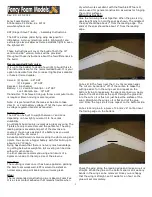
SECTION 8
CESSNA
AIRPLANE HANDLING, SERVICE
MODEL 172S NAV III
AND MAINTENANCE
KAP 140 AUTOPILOT
U.S.
FUEL
(Continued)
FUEL ADDITIVES
Strict adherence to recommended preflight draining instructions as
called for in Section 4 will eliminate any free water accumulations from
the tank sumps. While small amounts of water may still remain in
solution in the gasoline, it will normally be consumed and go unnoticed
in the operation of the engine.
One exception to this can be encountered when operating under the
combined effect of: (1) use of certain fuels, with (2) high humidity
conditions on the ground (3) followed by flight at high altitude and low
temperature. Under these unusual conditions, small amounts of water
in solution can precipitate from the fuel stream and freeze in sufficient
quantities to induce partial icing of the engine fuel system.
While these conditions are quite rare and will not normally pose a
problem to owners and operators, they do exist in certain areas of the
world and consequently must be dealt with, when encountered.
Therefore, to help alleviate the possibility of fuel icing occurring under
these unusual conditions, it is permissible to add isopropyl alcohol or
Diethylene Glycol Monomethyl Ether (DiEGME) compound to the fuel
supply.
The introduction of alcohol or DiEGME compound into the fuel provides
two distinct effects: (1) it absorbs the dissolved water from the gasoline
and (2) alcohol has a freezing temperature depressant effect.
NOTE
When using fuel additives, it must be remembered that the
final goal is to obtain a correct fuel to additive ratio in the
tank, and not just with fuel coming out of the refueling
nozzle. For example, adding 15 gallons of correctly
proportioned fuel to a tank which contains 20 gallons of
untreated fuel will result in a lower than acceptable
concentration level to the 35 gallons of fuel which now
reside in the tank.
(Continued Next Page)
172SPHAUS-05
8-16
For
Training
Purposes
Only
Summary of Contents for Cessna 172S NAV III Skyhawk SP
Page 2: ...F o r T r a i n i n g P u r p o s e s O n l y...
Page 6: ...F o r T r a i n i n g P u r p o s e s O n l y...
Page 8: ...F o r T r a i n i n g P u r p o s e s O n l y...
Page 10: ...F o r T r a i n i n g P u r p o s e s O n l y...
Page 12: ...F o r T r a i n i n g P u r p o s e s O n l y...
Page 42: ...F o r T r a i n i n g P u r p o s e s O n l y...
Page 72: ...F o r T r a i n i n g P u r p o s e s O n l y...
Page 160: ...F o r T r a i n i n g P u r p o s e s O n l y...
Page 184: ...F o r T r a i n i n g P u r p o s e s O n l y...
Page 200: ...F o r T r a i n i n g P u r p o s e s O n l y...
Page 210: ...F o r T r a i n i n g P u r p o s e s O n l y...
Page 286: ...F o r T r a i n i n g P u r p o s e s O n l y...
Page 312: ...F o r T r a i n i n g P u r p o s e s O n l y...
Page 314: ...F o r T r a i n i n g P u r p o s e s O n l y...
Page 316: ...F o r T r a i n i n g P u r p o s e s O n l y...
Page 334: ...F o r T r a i n i n g P u r p o s e s O n l y...
Page 388: ...F o r T r a i n i n g P u r p o s e s O n l y...
Page 430: ...F o r T r a i n i n g P u r p o s e s O n l y...
Page 444: ...F o r T r a i n i n g P u r p o s e s O n l y...
Page 450: ...F o r T r a i n i n g P u r p o s e s O n l y...
Page 464: ...F o r T r a i n i n g P u r p o s e s O n l y...
Page 486: ...F o r T r a i n i n g P u r p o s e s O n l y...
Page 488: ...F o r T r a i n i n g P u r p o s e s O n l y...
Page 489: ...F o r T r a i n i n g P u r p o s e s O n l y...
Page 490: ...F o r T r a i n i n g P u r p o s e s O n l y...
















































